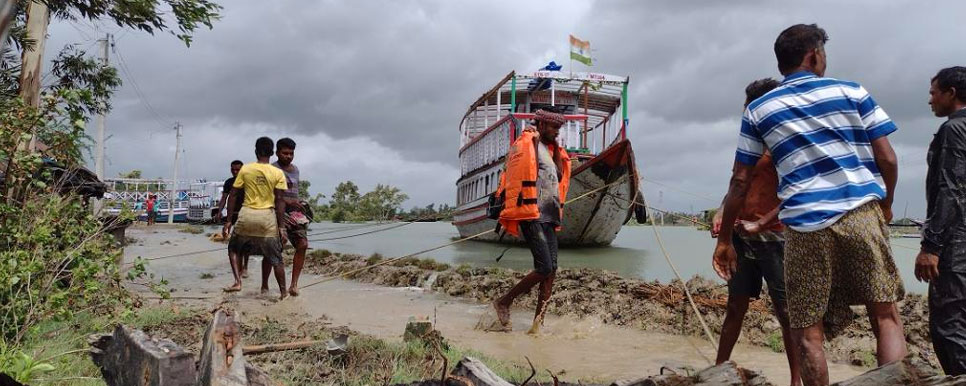Mitigation and Preparedness for Climate-Related Disasters in the Sunderbans
The Sunderbans, a vast delta region straddling India and Bangladesh, is a fragile ecosystem that faces the relentless impacts of climate change. The region is susceptible to a range of climate-related disasters, including cyclones, rising sea levels, and extreme weather events. In the face of these challenges, effective mitigation and preparedness strategies are crucial for safeguarding the vulnerable communities and the unique biodiversity of the Sunderbans.

1. Cyclones and Storm Surges: The Sunderbans are frequently in the path of cyclones originating in the Bay of Bengal, posing a significant threat to the low-lying islands and their inhabitants. To mitigate the impact of cyclones, early warning systems play a pivotal role. Investing in advanced meteorological technology and enhancing communication infrastructure enables timely dissemination of alerts, giving residents the precious time needed to evacuate to safer areas. Additionally, constructing resilient shelters on higher ground provides a secure refuge during cyclone emergencies.
2. Rising Sea Levels: One of the most pressing concerns for the Sunderbans is the rising sea levels attributed to climate change. This phenomenon exacerbates saltwater intrusion, affecting agricultural lands and freshwater resources. Afforestation and mangrove conservation efforts act as natural barriers, helping to reduce the impacts of rising sea levels. Furthermore, sustainable aquaculture practices and the promotion of salt-resistant crop varieties contribute to the resilience of local communities dependent on agriculture and fisheries.
3. Community-Based Adaptation: Empowering local communities to adapt to changing climatic conditions is essential for the sustainable development of the Sunderbans. Community-based adaptation initiatives involve educating residents about climate-resilient practices, promoting alternative livelihoods, and establishing community-managed disaster response teams. Engaging with indigenous knowledge and involving communities in decision-making processes ensures that adaptation strategies are culturally sensitive and effective.
4. Biodiversity Conservation and Restoration: The Sunderbans are renowned for their rich biodiversity, including the Bengal tiger, spotted deer, and various bird species. Climate-related disasters can have severe consequences for these fragile ecosystems. Conservation efforts involve the restoration of mangrove forests, which act as a natural buffer against storm surges. Additionally, creating protected areas and wildlife corridors enhances the resilience of the region's flora and fauna, allowing them to adapt to changing environmental conditions.
5. International Collaboration and Funding: Given the Trans boundary nature of the Sunderban National Park , international collaboration is crucial for effective climate change mitigation and disaster preparedness. Collaborative research, sharing of best practices, and joint initiatives facilitate a comprehensive approach to addressing the challenges faced by the Sunderbans. Financial support from international organizations and donor countries is vital for implementing large-scale projects that enhance infrastructure, provide technological resources, and support community resilience.
In Conclusion:
Mitigating and preparing for climate-related disasters in the Sunderbans requires a multifaceted approach that combines early warning systems, community-based adaptation, biodiversity conservation, and international collaboration. As the impacts of climate change intensify, investing in the resilience of this unique deltaic region becomes not only an environmental imperative but also a commitment to protecting the lives and livelihoods of the communities that call the Sunderbans home. Through sustained efforts and global cooperation, we can work towards a more sustainable and resilient future for the Sunderbans and its inhabitants.